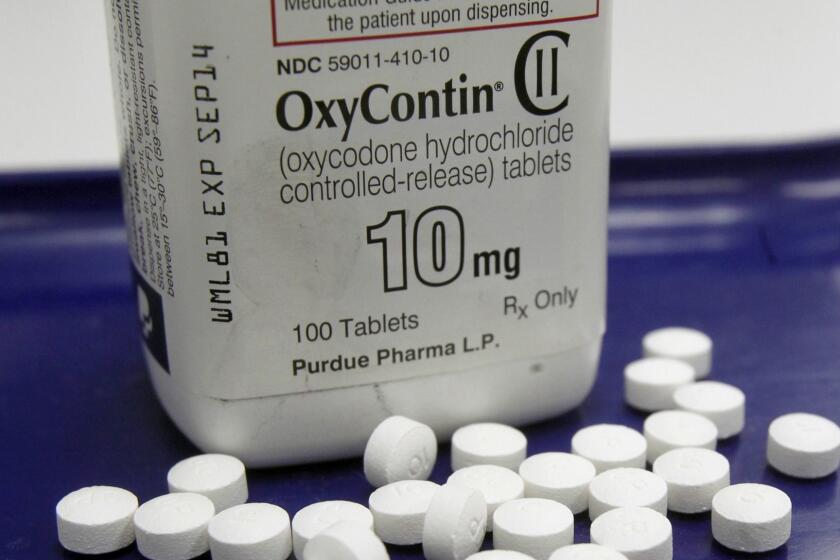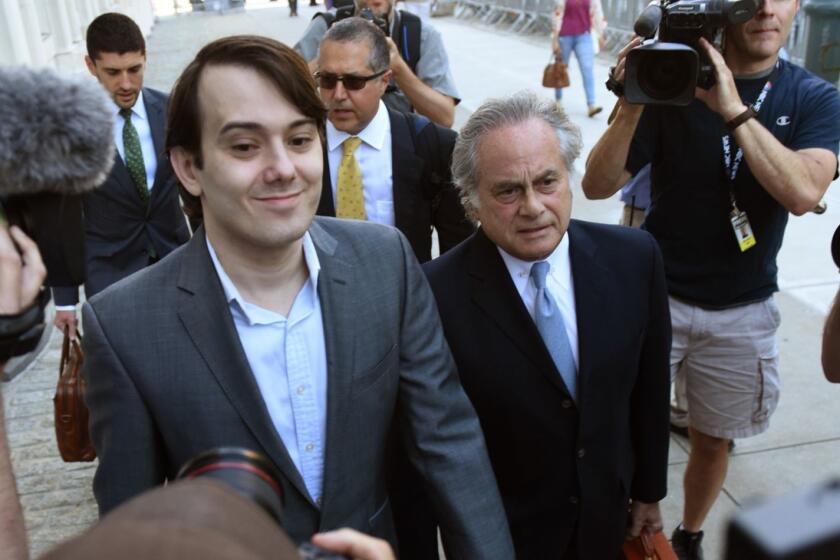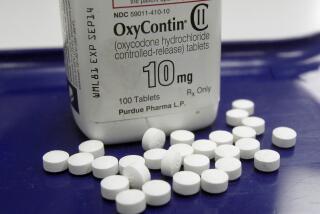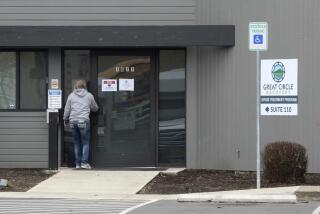Column: Johnson & Johnson got hit for a $572-million opioid verdict. Why did its stock go up?
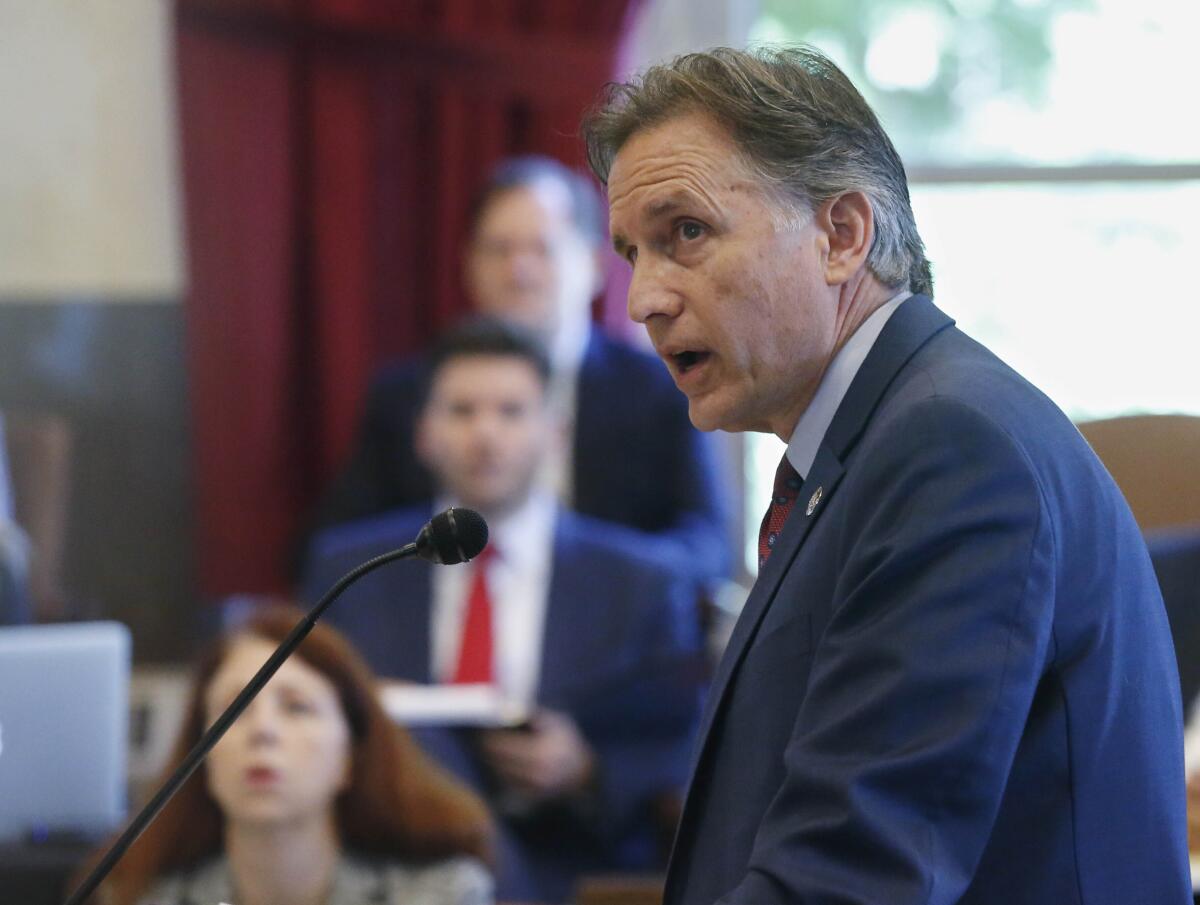
- Share via
You can be forgiven for thinking that Johnson & Johnson just got some good news. The stock closed up by $1.84, or 1.44%, on Tuesday while the broad market was lower. At its peak for the day, the gain had been nearly $5, and that was on the heels of a healthy gain for the shares on Monday.
And yes, in the expectations game that is the stock market, the company did get some very good news Monday. That’s when a state judge in Oklahoma socked it with a $572-million judgment for its role in creating the state’s opioid crisis, which is one of the worst in the nation. Stocks in other opioid companies also have risen.
Monday’s ruling by Judge Thad Balkman of Cleveland County District Court covers roughly what it will cost the state to run an opioid addiction abatement program for a year, including screening, hospitalization and detox for patients and recruitment and training of caregivers.
It’s not a crime to vigorously promote your product, but it’s a tortious act to misrepresent the safety of your product.
— Michelle Mello, Stanford University
But in the expectations game played on Wall Street, the judgment falls into the category of “it could have been worse.” Much worse: The state of Oklahoma was seeking as much as $17 billion, which is where it pegged the 30-year cost of cleaning up the opioid disaster.
Johnson & Johnson says it will appeal the $572-million judgment, but even if it loses, that sum is the equivalent of about two weeks of profits for the giant pharmaceutical firm, which pocketed more than $15 billion in net income last year. If you’re an investor, what’s not to like?
One of the most popular partisan attacks on Medicaid is the claim that the program’s expansion under the Affordable Care Act exacerbated the opioid crisis in America. — You’ll find this claim retailed on right-wing websites all across the internet.
Yet investors may soon recognize that there are alarming signals within the Oklahoma verdict. “The $572-million judgment is very bearish,” Patrick Trucchio of Berenberg Capital Markets warned investors, according to Barron’s. That applies to companies with exposure to opioid litigation in general, Trucchio said, estimating the total risk at $150 billion.
The size of the judgment in a small state, levied on a company with a tiny 1% market share in opioid painkillers, also has gotten the attention of legal experts.
“My first impression is that this was not good news for Johnson & Johnson,” says Michelle Mello, an expert in health policy at Stanford law and medical schools. She says she expected the company to win the case because the state’s claim had been whittled down to an accusation that the company created a “public nuisance.”
The judgment against Johnson & Johnson comes after Oklahoma reached deals with two other opioid companies: a $270-million settlement with OxyContin maker Purdue Pharma and an $85-million settlement with Israeli-owned Teva Pharmaceutical.
In the category of saying the quiet parts out loud, consider this statement by Nirmal Mulye, the chief executive of drug company Nostrum Laboratories: “I think it is a moral requirement to make money when you can ... to sell the product for the highest price.”
For companies defending against opioid lawsuits, the most alarming element of Judge Balkman’s ruling may be that his findings fall well within the claims being made in court by patients, states and communities.
Let’s look at the details.
Following a nonjury trial conducted over six weeks that ended July 15, Balkman found that Johnson & Johnson had pushed the argument that doctors were underprescribing for patients’ pain and that opioids were minimally addictive, compared with other prescription painkillers, and relatively immune from abuse. The company taught its sales representatives “to avoid the ‘addiction ditch’ — i.e., to avoid the negatives (addiction) and emphasize the positives (supposed efficacy) in sales calls,” he observed.
The harvest included the deaths of 2,100 Oklahomans from opioid overdoses in 2011 to 2015. Balkman noted that in 2015 alone, more than 326 million opioid pills were dispensed to state residents, “enough for every adult to have 110 pills.”
Johnson & Johnson, like other companies, did nothing to train its sales force to recognize “red flags that could indicate a ‘pill mill’” — providers who were vastly overprescribing its painkillers. These red flags included “pain clinics with patients lined up out the door or patients passed out in the waiting room.”
The giant drug company Pfizer seemed to hand President Trump a big win Tuesday when it announced it would roll back a slate of price increases that took effect July 1.
Although the company had a small share of the end-product market, Balkman noted that it became the biggest provider of raw materials, including oxycodone, morphine and codeine, for other opioid manufacturers. Two former subsidiaries that Johnson & Johnson sold in 2016 produced and imported the ingredients for the U.S. market.
One was Tasmanian Alkaloids, which grew opium poppies in Tasmania and anticipated demand for opioids in the mid-1990s by developing a high-opiate variety of the plant.
The company was an active participant in the drug industry’s campaign “to disseminate the messages that pain was being undertreated and ‘there was a low risk of abuse and a low danger’ of prescribing opioids” for chronic pain, Balkman ruled. The assertion that pain was undertreated was true — and still is — medical experts say. But opioids were far more dangerous and addictive than the drug makers let on.
With high drug prices still in the political crosshairs on Capitol Hill, pharmaceutical industry bosses are at pains to explain why a cure for hepatitis-C has to cost a budget-busting $1,000 per pill, or a promising cancer treatment should carry a list price of $373,000.
The drugmakers funded advocacy groups such as the American Academy of Pain Medicine, to advance their position by issuing practice guidelines that company representatives helped draft, the judge noted.
That opioid addiction and deaths in Oklahoma tracked the surge in opioid sales in the state “was not a coincidence,” Balkman found. Doctors and others in the medical community were “being pushed and pushed and marketed [to] and misled” by Johnson & Johnson, among other companies.
The Oklahoma judge’s finding that Johnson & Johnson misrepresented the safety of its product is a warning to other defendant companies in opioid cases if other judges “buy the argument that what was going on was deception and fraud, and they knew it was fraud,” Mello told me. “It’s not a crime to vigorously promote your product, but it’s a tortious act to misrepresent the safety of your product.”
The Oklahoma verdict, she says, relies on claims that closely parallel those in other cases. “You could lift out product and company names [in the Oklahoma case] and replace them with the names of other products and companies in litigation elsewhere in the country.”
In other words, investors in Johnson & Johnson and other drug companies may be celebrating too soon.
More to Read
Inside the business of entertainment
The Wide Shot brings you news, analysis and insights on everything from streaming wars to production — and what it all means for the future.
You may occasionally receive promotional content from the Los Angeles Times.

